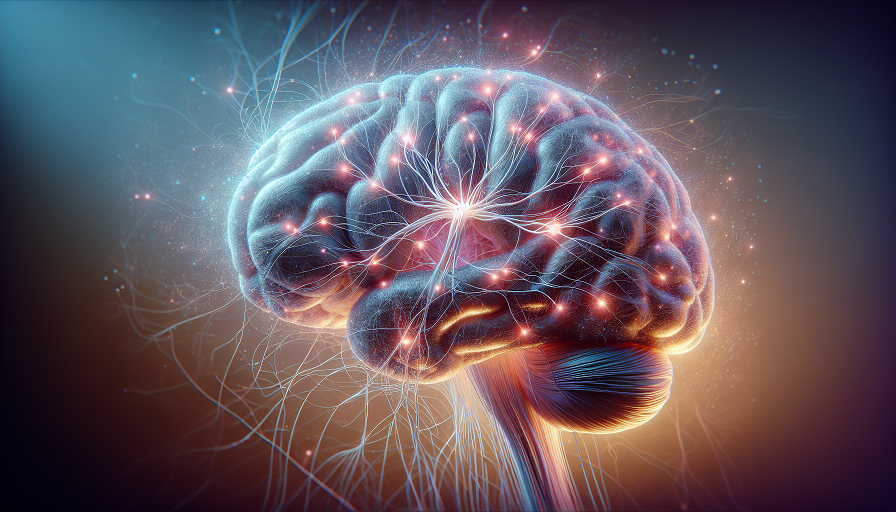
Life is full of challenges, from navigating personal setbacks to managing everyday stress. While these experiences test our emotional resilience, the good news is that resilience isn’t a fixed trait — it’s a skill that can be developed and strengthened. At the core of this growth lies neuroplasticity, the brain’s remarkable ability to adapt, rewire, and recover from adversity. Here we look at the fascinating link between neuroplasticity and emotional resilience, shedding light on how brain adaptability shapes mental strength and emotional well-being.
Contents
What Is Emotional Resilience?
Emotional resilience is the ability to adapt to life’s challenges, bounce back from setbacks, and maintain mental well-being under stress. It involves a range of skills, including emotional regulation, problem-solving, and the capacity to maintain a positive outlook in difficult situations.
Resilience doesn’t mean avoiding hardship; rather, it reflects how effectively we respond to it. People with high emotional resilience tend to cope better with stress, experience fewer negative emotions, and recover more quickly from emotional wounds. Neuroplasticity, the brain’s capacity to change and grow, plays a central role in building and sustaining this resilience.
Understanding Neuroplasticity
Neuroplasticity is the brain’s ability to reorganize itself by forming new neural connections and strengthening existing ones. It enables us to learn new skills, adapt to changing circumstances, and recover from emotional or physical trauma. Neuroplasticity occurs throughout life, with key processes including:
- Synaptic Plasticity: Changes in the strength of connections between neurons, which underpin learning and memory.
- Structural Plasticity: Physical changes in the brain, such as the growth of new neurons or the pruning of unused connections.
By leveraging neuroplasticity, the brain can reshape itself in response to emotional experiences, helping us build resilience over time.
How Neuroplasticity Supports Emotional Resilience
Neuroplasticity plays a key role in shaping our emotional responses, regulating stress, and enabling recovery from adversity. Here’s how:
Strengthening Emotional Regulation
Emotional regulation is the ability to manage and respond to emotions in a healthy way. Neuroplasticity supports this process by reinforcing neural pathways in the prefrontal cortex, the brain region responsible for decision-making and self-control. Strengthened connections in this area help us resist impulsive reactions and adopt healthier coping strategies.
Rewiring Negative Thought Patterns
Chronic stress or trauma can create negative thought patterns that perpetuate feelings of helplessness or anxiety. Through neuroplasticity, these patterns can be disrupted and replaced with more positive and adaptive ways of thinking. Practices like cognitive-behavioral therapy (CBT) leverage neuroplasticity to help individuals reframe their thoughts and build resilience.
Enhancing Stress Resilience
The brain’s response to stress involves several regions, including the amygdala, hippocampus, and prefrontal cortex. Neuroplasticity enables these areas to adapt to stress over time. For example, mindfulness meditation has been shown to reduce activity in the amygdala (associated with fear and stress) and strengthen connections in the prefrontal cortex, improving our ability to remain calm under pressure.
Promoting Recovery from Trauma
Neuroplasticity is crucial for healing emotional wounds. After trauma, the brain can form new pathways to process and integrate difficult experiences, enabling individuals to move forward. Therapeutic approaches like eye movement desensitization and reprocessing (EMDR) leverage neuroplasticity to support trauma recovery.
Fostering Optimism and Positive Emotions
Positive emotions play a significant role in resilience, as they broaden our perspective and help us build social connections. Neuroplasticity allows the brain to amplify positive experiences, creating a feedback loop that reinforces optimism and emotional strength.
Key Studies Linking Neuroplasticity and Emotional Resilience
Scientific research has provided compelling evidence for the connection between neuroplasticity and emotional resilience. Here are some key studies:
Mindfulness Meditation and Brain Plasticity
A 2011 study by Sara Lazar and colleagues showed that an eight-week mindfulness-based stress reduction (MBSR) program led to increased gray matter density in the hippocampus and prefrontal cortex. These changes were associated with improved emotional regulation and stress resilience, demonstrating how meditation promotes neuroplasticity to enhance resilience.
Exercise and Stress Resilience
A 2008 study by Gomez-Pinilla et al. highlighted the role of physical exercise in increasing brain-derived neurotrophic factor (BDNF), a protein that supports neuroplasticity. Higher BDNF levels were linked to better stress resilience and emotional well-being.
Cognitive-Behavioral Therapy and Neural Rewiring
Research on cognitive-behavioral therapy (CBT) has shown that it can change brain activity patterns, particularly in the prefrontal cortex and amygdala. These changes improve emotional regulation and reduce anxiety, providing direct evidence of neuroplasticity in action.
Building Emotional Resilience Through Neuroplasticity
Leveraging neuroplasticity to enhance emotional resilience involves engaging in activities that promote brain adaptability. Here are some proven strategies:
Practice Mindfulness
Mindfulness meditation encourages the brain to form new pathways that enhance focus, emotional regulation, and stress management. Even 10-15 minutes a day can make a difference.
Engage in Regular Exercise
Physical activity increases BDNF levels, promoting neural growth and resilience. Activities like running, yoga, or strength training can boost both physical and emotional well-being.
Challenge Negative Thoughts
Use techniques from CBT to identify and reframe negative thought patterns. Over time, this can rewire the brain for more adaptive and positive responses to stress.
Foster Social Connections
Positive social interactions stimulate the release of oxytocin, which enhances emotional resilience and strengthens neural networks associated with trust and empathy.
Prioritize Sleep
Sleep is essential for consolidating memories and supporting neuroplasticity. Aim for 7-9 hours of quality sleep per night to optimize brain health.
The Interplay of Neuroplasticity and Emotional Resilience
Neuroplasticity and emotional resilience are deeply interconnected, with each influencing and enhancing the other. By reshaping neural pathways, neuroplasticity enables us to adapt to challenges, recover from adversity, and cultivate mental strength. Meanwhile, emotional resilience provides the foundation for leveraging neuroplasticity, allowing us to thrive in the face of life’s difficulties.
Through mindfulness, exercise, therapy, and other brain-friendly practices, we can harness the power of neuroplasticity to build emotional resilience and lead more balanced, fulfilling lives. With time and effort, the brain’s capacity for change can help us unlock our full potential for emotional well-being and mental adaptability.

